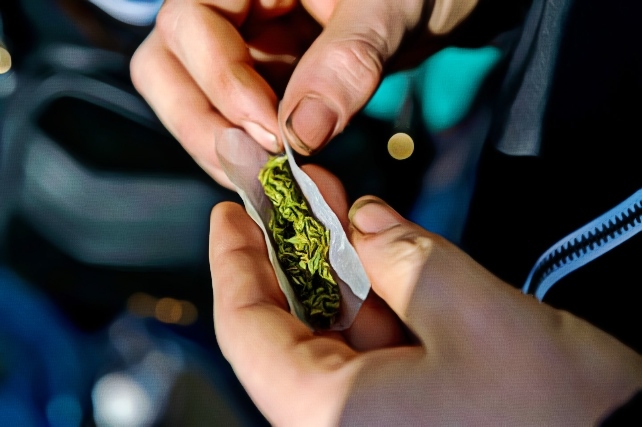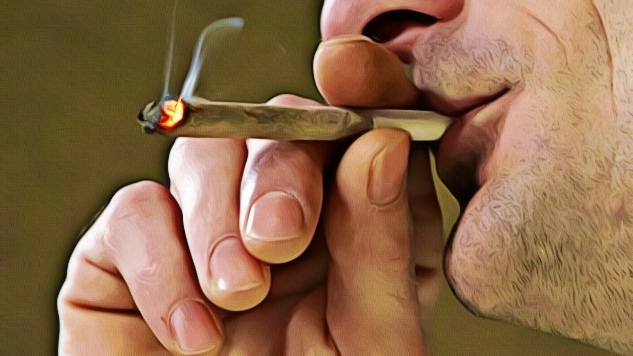Marijuana and its growing popularity through the years, which is now deemed in various corners of the country as a legal drug, has been used as a pain reliever in even the most complex conditions, including cancer.One of its many uses is believed to be a depressant, which is a drug used to relax the body and mind, thereby alleviating one’s worries, fears, and physical pain. As with all things, however, too much of anything is never good.
To fully understand the effects of marijuana, its dangers, and everything else it encompasses, here is a comprehensive guide to follow:
Is marijuana a depressant?
Although marijuana is a widely used drug in the United States and is slowly gaining legalization, it remains to be a controversial substance. Advocates and those against it continue to argue over its effectiveness as a medicine, and whether or not it’s necessary in the medical world. People also continue to argue its very nature, as marijuana can essentially be easily classified as both a depressant and a stimulant.
As a psychoactive drug, its effects vary from person to person. Perhaps this very reason continues to spark debates and arguments, but one thing is clear—it’s now used in various states, both for medicinal and recreational purposes.
It’s reported to act similarly to alcoholic beverages, meaning that it’s both a depressant and stimulant. Side effects known begin quickly but can last longer than the effects of the alcohol. Those who use marijuana report to have boosts in creativity and mood, which is a testament to its stimulant effects.

Still, however, many of marijuana’s compounds are similar to those of depressants. It provides hallucinogen effects, repressing the central nervous system into a state of relaxation. As a result, marijuana is now used to support chronic pain conditions, including cancer and other complex diseases.
It’s worth noting, however, that marijuana isn’t just a single drug—it has various types, strains, and doses, making it a highly versatile drug. Used correctly, it serves as an innovative road to managing specific human conditions. When misused, however, the effects can be catastrophic.
What is a depressant?
In the medical world, depressants are substances used to depress the central nervous system (CNS) of the human body. It has been designed specifically to address conditions, such as insomnia and anxiety. In other cases, however, depressants can also be used recreationally. Useful though depressants may sound, they hold the dangerous capability to become extremely addictive.
Those prescribed with depressants are asked to proceed with caution, as a single mistake can break resolve and lead to dependence. Strong medical supervision is required, especially when it comes to strong depressant substances like barbiturates, marijuana, alcohol, and even sleeping pills. Bodies eventually develop a tolerance for these drugs and so eventually, the individual will be compelled to take more, leading to dependence or addiction.
Here are the drugs classified as CNS depressants:
- Alcohol
- Benzodiazepines
- Various sleeping pills
- Barbiturates
- Opioids
Some of their common side effects include the following:
- Lowered blood pressure
- Disorientation and confusion
- Fatigue or sleepiness
- Dizziness
- Memory loss
- Slower reaction time
- Relaxation and euphoria
- Slurred speech
- Loss of coordination
- Impaired judgment
- Fainting or blacking out
Long term effects include chronic fatigue, weight gain, depression, difficulty in breathing, and of course, physical dependence and addiction.
How long does a marijuana high last?
Marijuana can facilitate a wide range of sensory and psychological effects, which include highs that induce mild euphoria, reverie, and increased sensory awareness. In most cases, provided that marijuana is taken with proper dosage, it can be therapeutic. However, the high it can provide depends on several factors.
Much of a person’s reaction to marijuana depends on the body’s biological makeup, as well as the different types of marijuana. A specific variety can bring forth an intense high, which usually lasts longer than others. This is due to the body’s endocannabinoid system (ECS), which pertains to lipids, enzymes, and receptors that are tasked to maintain and regulate bodily functions.
When compounds of the marijuana invade (THC), interaction with the ECS leads to a certain effect, one that can be experienced by the user. The question now stands—just how long can the effects last?

Once again, this depends entirely on several factors, especially the method of consumption. Most people experience a high within the first thirty minutes of use, while others only experience the effects an hour after inhalation. This effect can last for several hours, but keep in mind that the intensity of the effect will gradually decrease.
Understanding the risks of marijuana dependence
From everything mentioned above, the main long-term risks of depressants include dependence and addiction. The risks become higher when there is abuse involved, which is why depressants, along with marijuana, need to be taken at proper doses. Anything more than that can lead to life-threatening effects.
People who already suffer from depression, for instance, may steadily grow dependent on marijuana to battle negative thoughts and quell maladaptive ideations. As a result, they become even more depressed. This is also true for those who are not suffering from mental health conditions—too much of it may eventually lead to depression, although such lasting psychological effects are still up for debate.
The true dangers, however, come with combining marijuana with other substances. As a result of dependence and tolerance, most people are compelled to use other drugs to try and satisfy their needs. When combined with other depressants, however, the central nervous system can become compromised. Extreme drowsiness will occur, followed by a slowing down of the breathing and heart rate. When this occurs, a person will suffer from an overdose, which is a life-threatening condition that requires immediate medical attention.
The Bottom Line
Although marijuana is proving to be helpful in most disease battles, it remains to be a depressant and stimulant that needs to be controlled. All good side effects, such as the promotion of relaxation, good mood, and better sensory perception can help an individual overcome chronic conditions, but too much of it can be fatal. If you’re looking to use marijuana, it’s always best to seek the help of a professional.
Sources:
https://www.drugabuse.gov/publications/drugfacts/marijuana




